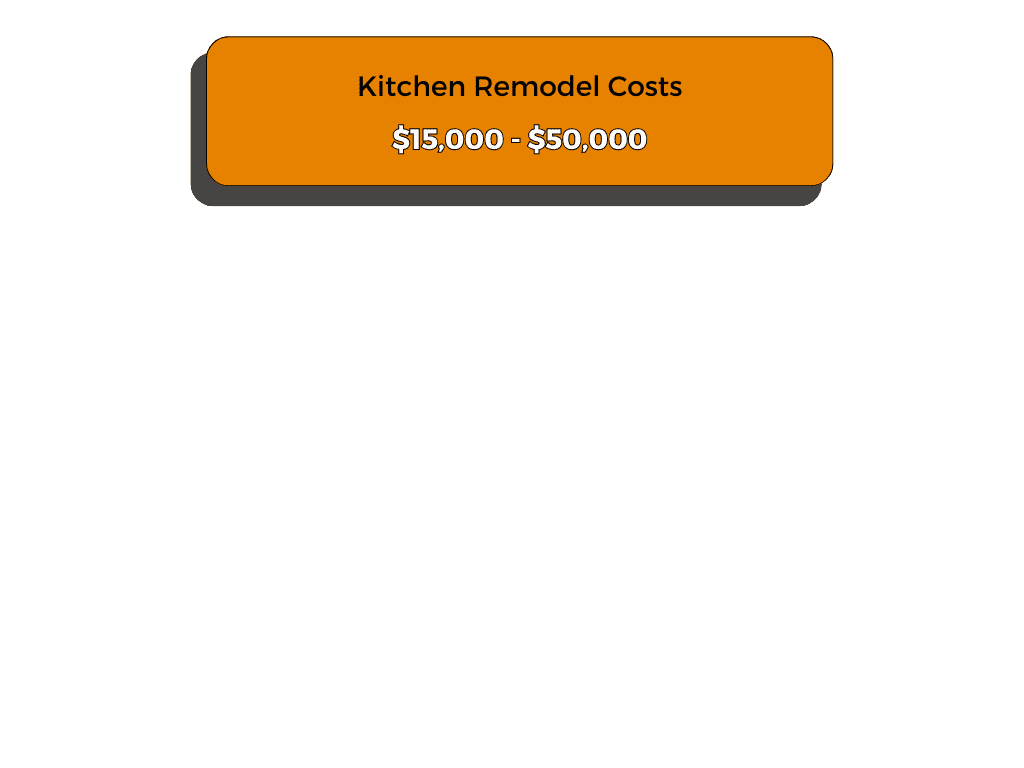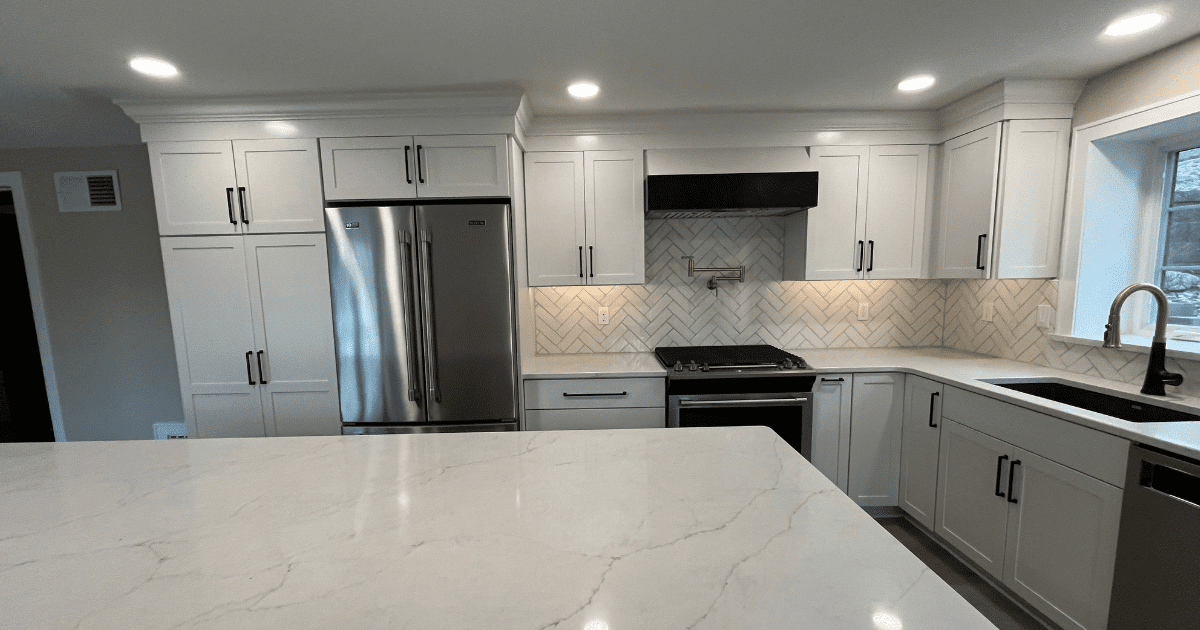
The Definitive Guide to Kitchen Remodels and Renovations.
Embarking on a kitchen renovation or remodel is an exciting journey, promising a revitalized space that blends functionality and style. Yet, in the world of home improvements, understanding the costs involved is crucial to ensure your vision aligns with your budget. In this comprehensive guide, we’ll break down the various expenses associated with kitchen renovations, offering insights and tips to help you navigate the financial landscape seamlessly.
Setting the Stage
Before diving into the dollars and cents, it’s essential to define the scope of your kitchen renovation. Are you aiming for a cosmetic facelift or a complete overhaul? Understanding the extent of your project will lay the groundwork for accurate cost estimation.
We use “remodel” and “renovate” interchangeably here, but there is a difference between the two. Remodeling refers to a “gut job” and may result in a layout change, expansion, or other significant construction aspect. Renovations tend to be more cosmetic with some possible layout changes that do not usually require rerouting services like plumbing and HVAC.
The Budget Breakdown
When estimating your kitchen space, many of the costs will be estimated in hours, square feet, or linear feet. It’s important to note the difference between the latter two.
Linear feet (often denoted as “LF” or simply “ft,”) measure length in a straight line. It is used to quantify the length of an object or distance along a straight path. For example, If you’re measuring the perimeter of a room or the length of a countertop, you’d use linear feet.
Square feet (often denoted as “sq. ft.”) measure the total area of a two-dimensional space. It is calculated by multiplying the length by the width. An example of this is when determining the size of a floor, wall, or any flat surface, square feet is the appropriate unit of measurement.
For the purposes of any “all in” costs listed here, we used the average kitchen size of approximately 150 sq. ft.
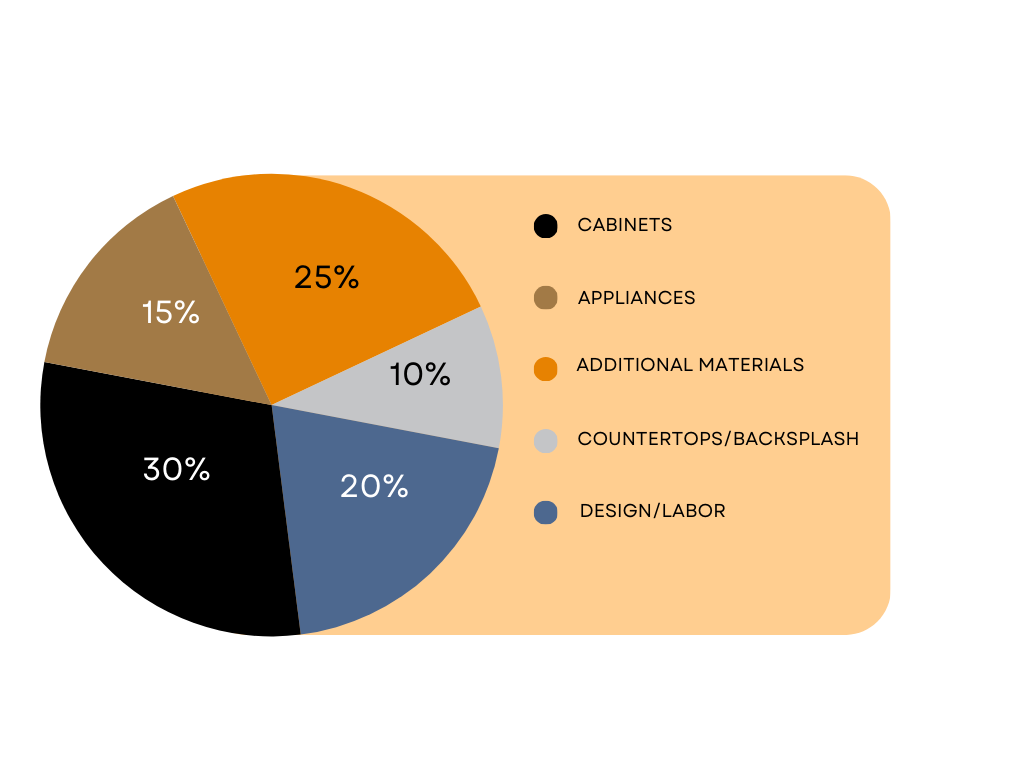
Materials:
The backbone of any kitchen renovation, materials, and appliances encompass a significant portion of your budget. From cabinets and countertops to appliances, each element contributes to the overall aesthetic and functionality of your space.
Cabinets
Cabinets are far and away the largest expenditure in any kitchen remodel. Determining whether to go with stock cabinets or custom cabinets as well as the material type all impact this cost. In general, cabinet prices range from $2,200 – $25,000 with the average homeowner spending $8,200 on cabinets.
Do not forget to account for demo and disposal costs in your budgeting. This typically runs $300 – $500.
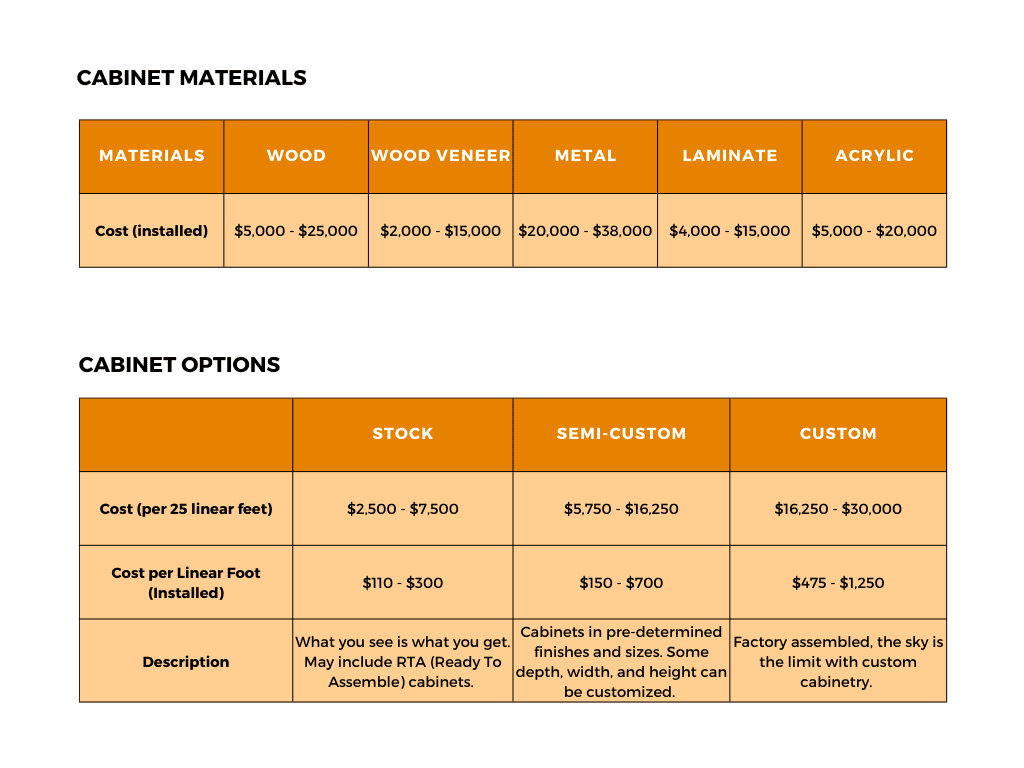
Appliances:
Some homeowners choose to reuse their existing appliances and later on we explain ways to update the look of those whereas some want all new appliances. Like many things, what you select will have cost implications. If you do elect to install new appliances that require new services to be run, that additional trade cost should be considered. This happens primarily when a water line needs to be run to a refrigerator or changing your stove from a gas to electric or vice versa.
Countertops and Backsplashes:
The cost of counters and backsplashes varies greatly depending on the materials you choose. The average homeowner will spend about $3,000 on new countertops with a range from $1,500 – $5,000.
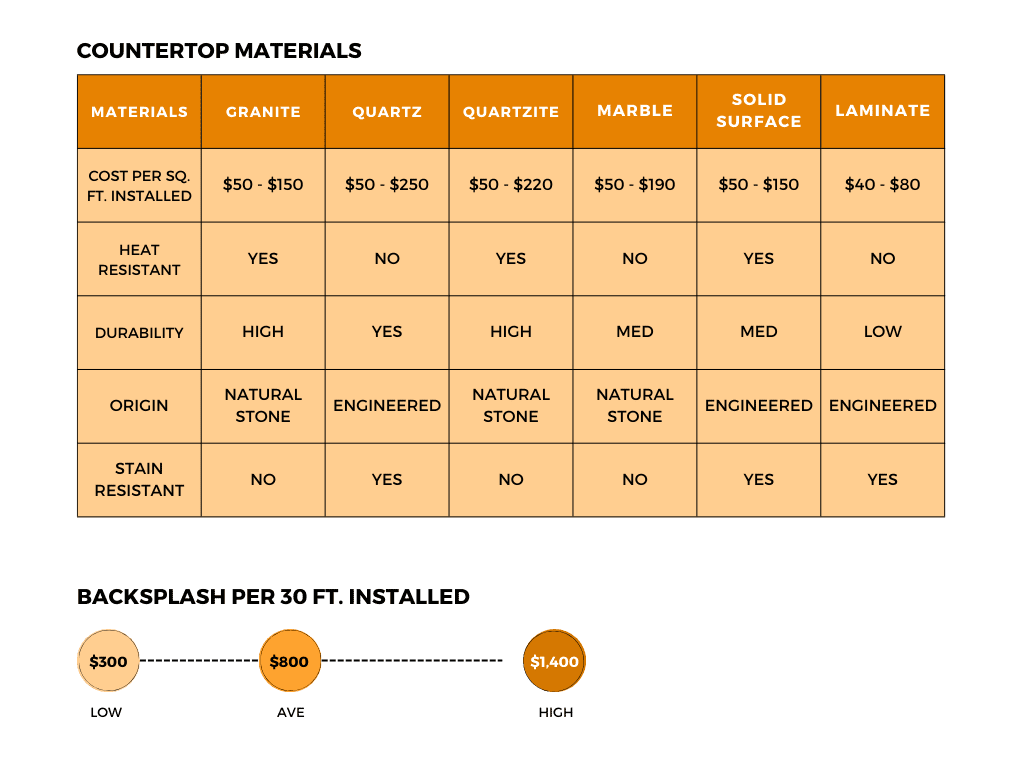
Labor Costs:
Skilled professionals are the backbone of any successful home remodel, turning visions into reality through their expertise. Labor costs encompass various services, including carpentry, plumbing, electrical work, HVAC, painting, and the invaluable contributions of a general contractor (GC). GCs play a pivotal role, managing the entirety of the project with rates typically ranging from 10-20% of the total project cost.
A top-tier GC serves as your project partner, comprehensively understanding your vision, educating you on project size and scope, and providing insights on viability, cost, and timelines. Proficient in permitting and building codes, a skilled GC orchestrates the coordination of trades, determines material lists, procures materials, pulls permits, orders inspections, and troubleshoots any arising issues.
The value of a GC extends to their relationships with reputable tradespeople and subcontractors. This network ensures timely scheduling, a common challenge when dealing directly with tradespersons. GCs understand the optimal “order of operations” for trades, facilitating seamless coordination. For instance, HVAC may need to precede plumbing, followed by electrical work, depending on what is needed in your remodel. The order of trades should be designed for efficiency and minimal adjustments.
In essence, a good GC brings not only project management skills but also a wealth of industry knowledge, ensuring your home remodel is a collaborative, well-coordinated effort that meets your expectations and complies with regulations.

Design Services:
Design services include outlining and planning for your dream space. Homeowners can engage with a designer or architect to conceptualize their space if they choose. Certified designers are typically $65 – $200/hour or 10-20% of the total project cost, while architects can run $100 – $200/hour or 15-20% of the total cost of the project. The range in Linn and Johnson counties is $850 – $12,500 with most homeowners spending about $5,500 on Design services. You may not need these services. However, you may require engineered plans for anything significant such as a wall-removal, or similar.
Permits:
Permit costs can vary significantly based on your location, with some areas having nominal fees while others may be more substantial. The Cedar Rapids/Iowa City corridor features diverse communities, each with its own permitting processes and requirements. Below are some examples and links to provide insight into the permit landscape:
- Anamosa, Iowa
- Jones County, Iowa
- Cedar Rapids, Iowa
- Fairfax, Iowa
- Marion, Iowa
- Mount Vernon, Iowa
- Information on permits in Linn County, Iowa can be found on their website. Linn County has a handy table as well as a calculator you can use to estimate the costs of your permit(s).
- North Liberty, Iowa. Please note that contractors working on a home in North Liberty must be licensed through the City of North Liberty.
- Coralville, Iowa
- Iowa City, Iowa
- Solon, Iowa
- Johnson County, Iowa
Understanding your local permit requirements is crucial for a smooth home remodel. Check the provided links or visit your city and county official websites for the most accurate and up-to-date information regarding permit fees, processes, and any specific regulations pertinent to your project. Again, this is information your General Contractor should know so you don’t have to.
Strategies for Cost Control
With a comprehensive grasp of your budget breakdown, exploring effective strategies becomes paramount to managing costs without compromising quality in your home remodel.
Prioritize Needs vs. Wants:
Distinguish non-negotiable elements from areas where flexibility is possible to align with your budget. For instance, consider alternatives like painting or refinishing cabinets instead of investing in new ones. Refacing, involving new faces (doors and drawer fronts), is a cost-effective option, typically a 1/4 – 1/3 the expense of entirely new cabinets. On average, this averages $1,350 whereas new cabinets average $8,200.
DIY Opportunities:
Leverage your skills or enlist assistance from friends and family to contribute to cost savings. If you’re proficient with a paintbrush, tackling the painting of walls or cabinets could be a DIY project. Consider taking on tasks like cabinet demo and disposal, always coordinating with your GC to avoid potential issues during the remodel.
Lower cost options:
You can choose to re-laminate existing countertops. This typically runs about $100 – $500 in materials and $35 – $60/hour in labor.
Customize Appliances on a Budget:
Achieve the look of high-end panel-ready appliances without the hefty price tag. If you’re adept at DIY projects, consider building custom front panels for existing appliances. Alternatively, explore the option of replacing knobs and handles or swapping out front panels for appliances that allow it.
Strategic Appliance Purchases:
Timing is crucial when buying new appliances. Take advantage of holiday sales and the fall to early winter period (September – December) for the best deals. Planning your appliance purchases during these times can significantly reduce costs. If appliance purchases aren’t part of your budget, did you know you can swap out handles, knobs, or panels.
Remember, a well-thought-out approach to your remodel allows you to make smart decisions, balancing your desires with budget constraints. By prioritizing and considering DIY opportunities, you can achieve a high-quality result without breaking the bank.
In the world of kitchen renovations, cost transparency is key to a successful project. Armed with a comprehensive understanding of where your budget is allocated, you can confidently navigate the intricate landscape of kitchen remodeling.
Reach out to your partners at Casper Builders for a quote on your reimagined kitchen!
